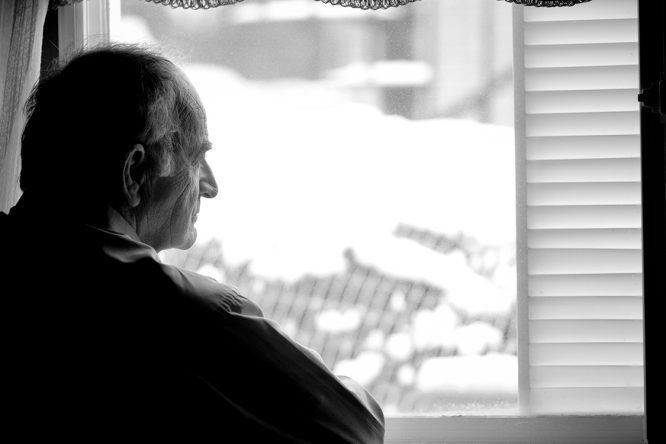Your elderly widower neighbor, Mr. Johnson, has always been a jovial and social member of the community. About a year ago, he had a stroke that took its toll, but after a couple of months, he seemed to bounce back and was living in his home as usual again.
Last month, you noticed a pink slip taped to his door that was warning of his electric being shut off for nonpayment. Come to think of it, you haven’t seen him in a couple of weeks. That’s when you realize that his mailbox is stuffed to the gills and overflowing. You knock on his door, and he comes to greet you, smiling as always.
When you inquire about the slip and the mail, he tells you that his children are handling all of those items for him now, so he’s just leaving them in place until his daughter comes to visit next week. When you ask him if he needs any help around the house, he politely rejects your offer, saying that he has it under control. He points to his cat and remarks how chubby he is getting from being well-fed. He assures you that everything is fine and seems to genuinely appreciate your visit. You walk away from the house, feeling confident that Mr. Johnson is okay. Little do you know, he’s in an abusive situation because of self-neglect.
Elder abuse is a serious topic that aging services organizations have invested millions of dollars in preventing. They’ve trained their staff and volunteers to look for signs of abuse and actively report any issues that may arise. The culture around abuse has changed for the better, and older adults are living longer, happier lives because of it. Yet, there is still one area of elder abuse that we can’t seem to get our hands around: self-neglect.
A 2014 survey conducted by the National Association of Professional Geriatric Care Managers found that self-neglect among seniors was the most common form of non-financial elder abuse/neglect. Everyone knows to look out for signs of physical, sexual and even financial abuse among those they care for, but self-neglect can be a bit harder to spot and is easily written off as a personal or lifestyle choice rather than a form of abuse.
So, when does self-neglect rise to the level of truly being abuse that should be reported by a caregiver? Here are six signs to watch out for, as reported in the study:
- A decline in personal hygiene, such as unkempt hair, failure to bathe regularly and inability to keep up with basic grooming habits
- Failure to take medication on time and on schedule
- Malnutrition or dehydration
- Unsanitary living conditions
- Inability to meet financial deadlines, such as unpaid bills, shut-off utilities, etc.
- Weight loss, especially in light of food insecurity in the home
These signs all seem like they’d be very obvious to an outsider providing care, yet in practice, the signs can be much harder to spot, as the opening story illustrates.
We encourage everyone who is working in the aging services space to always remember to be on the lookout for signs of self-neglect, as they can occur both in the home and in retirement communities.
Sources:
http://www.asaging.org/blog/elder-self-neglect-growing-and-largely-hidden-problem



